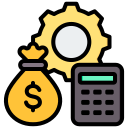Build Your Buffer First: The Safety Net That Protects Your Goal
A three-to-six month expense buffer neutralizes late payments, slow seasons, and sudden repairs. With a cushion, you can keep contributions flowing even when a client delays. Confidence compounds: you negotiate better, avoid debt, and approach your purchase without lingering financial anxiety.
Build Your Buffer First: The Safety Net That Protects Your Goal
Block buffer weeks each quarter to focus on pipeline and collections, not new spending. Use them to chase invoices, refresh proposals, and evaluate subscriptions. These pauses reduce waste, free cash, and protect your savings from being sacrificed to poor planning or avoidable leaks.
Build Your Buffer First: The Safety Net That Protects Your Goal
A freelance photographer saved for a pro lens, then a key gig canceled. Her emergency fund covered rent and software renewals, so the lens fund stayed intact. Two weeks later, a festival booking replaced the income, and she bought the lens without touching credit.
Build Your Buffer First: The Safety Net That Protects Your Goal
Lorem ipsum dolor sit amet, consectetur adipiscing elit. Ut elit tellus, luctus nec ullamcorper mattis, pulvinar dapibus leo.









